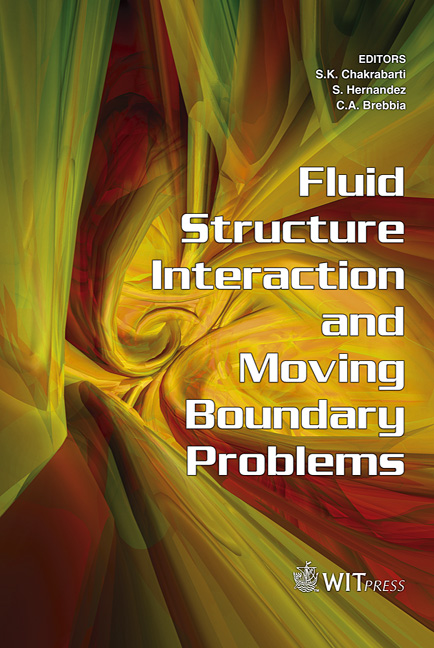Bluff-body Flow Created By Combined Rotary And Translational Oscillation
Price
Free (open access)
Transaction
Volume
84
Pages
9
Published
2005
Size
4,143 kb
Paper DOI
10.2495/FSI050191
Copyright
WIT Press
Author(s)
S. Kocabiyik & Q. M. Al-Mdallal
Abstract
The wake states and loading due to combined forced transverse and rotational oscillations of a circular cylinder are studied. The governing equations based on stream function-vorticity formulation are solved numerically using an accurate spectral finite-difference method. Results are presented for three sets of the four dimensionless groups which characterize these flows for combined phase-locked translation and rotation with a single frequency. The lock-on phenomenon has been predicted and its effect on the flow hydrodynamics has been determined. Keywords: computation, unsteady, incompressible, viscous, translational and rotational oscillations, cylinder. 1 Introduction When the body periodically oscillated by external forcing, the vortex shedding frequency may be modified or shifted from its natural shedding frequency to the forcing frequency. This \“lock-on” of vortex shedding to the forcing frequency causes a number of significant changes to occur in both the wake structure and the dynamic of fluid forces and provides potential means for active control of the wake flow behind a bluff body. The phenomenon of vortex induced vibration of bluff bodies has been studied extensively. Despite the large number of papers dedicated to the problem of a cylinder vibrating transverse to a fluid flow (see S¨umer and Fredsøe [1]) there is only one paper which also allow the body to perform rotational oscillations in a quiescent fluid: Blackburn et al. [2]. A literature survey reveals there are no papers studying the case of vortex-induced vibrations in which a circular cylinder moves with combined transverse and rotational oscillations in a uniform flow.
Keywords
computation, unsteady, incompressible, viscous, translational and rotational oscillations, cylinder.





